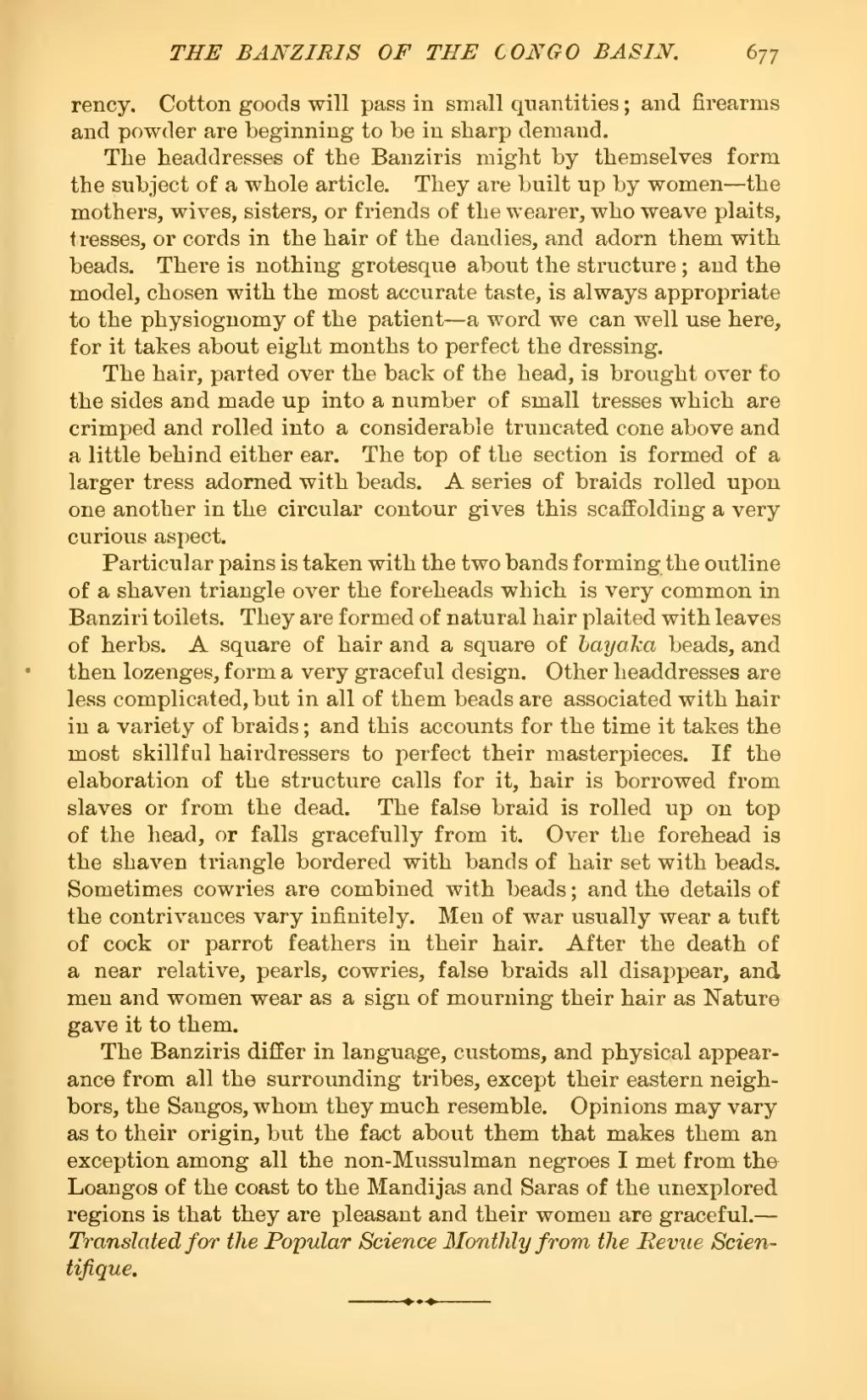rency. Cotton goods will pass in small quantities; and firearms and powder are beginning to be in sharp demand.
The headdresses of the Banziris might by themselves form the subject of a whole article. They are built up by women—the mothers, wives, sisters, or friends of the wearer, who weave plaits, tresses, or cords in the hair of the dandies, and adorn them with beads. There is nothing grotesque about the structure; and the model, chosen with the most accurate taste, is always appropriate to the physiognomy of the patient—a word we can well use here, for it takes about eight months to perfect the dressing.
The hair, parted over the back of the head, is brought over to the sides and made up into a number of small tresses which are crimped and rolled into a considerable truncated cone above and a little behind either ear. The top of the section is formed of a larger tress adorned with beads. A series of braids rolled upon one another in the circular contour gives this scaffolding a very curious aspect.
Particular pains is taken with the two bands forming the outline of a shaven triangle over the foreheads which is very common in Banziri toilets. They are formed of natural hair plaited with leaves of herbs. A square of hair and a square of bayaka beads, and then lozenges, form a very graceful design. Other headdresses are less complicated, but in all of them beads are associated with hair in a variety of braids; and this accounts for the time it takes the most skillful hairdressers to perfect their masterpieces. If the elaboration of the structure calls for it, hair is borrowed from slaves or from the dead. The false braid is rolled up on top of the head, or falls gracefully from it. Over the forehead is the shaven triangle bordered with bands of hair set with beads. Sometimes cowries are combined with beads; and the details of the contrivances vary infinitely. Men of war usually wear a tuft of cock or parrot feathers in their hair. After the death of a near relative, pearls, cowries, false braids all disappear, and men and women wear as a sign of mourning their hair as Nature gave it to them.
The Banziris differ in language, customs, and physical appearance from all the surrounding tribes, except their eastern neighbors, the Sangos, whom they much resemble. Opinions may vary as to their origin, but the fact about them that makes them an exception among all the non-Mussulman negroes I met from the Loangos of the coast to the Mandijas and Saras of the unexplored regions is that they are pleasant and their women are graceful.—Translated for the Popular Science Monthly from the Revue Scientifique.
